Our recipe for sauteed oyster and shiitake mushrooms with chickpea miso sauce is soy free and packed with flavor! This is delicious as a side or served by itself with noodles or on a grain bowl. These miso mushrooms are also gluten free and vegan.
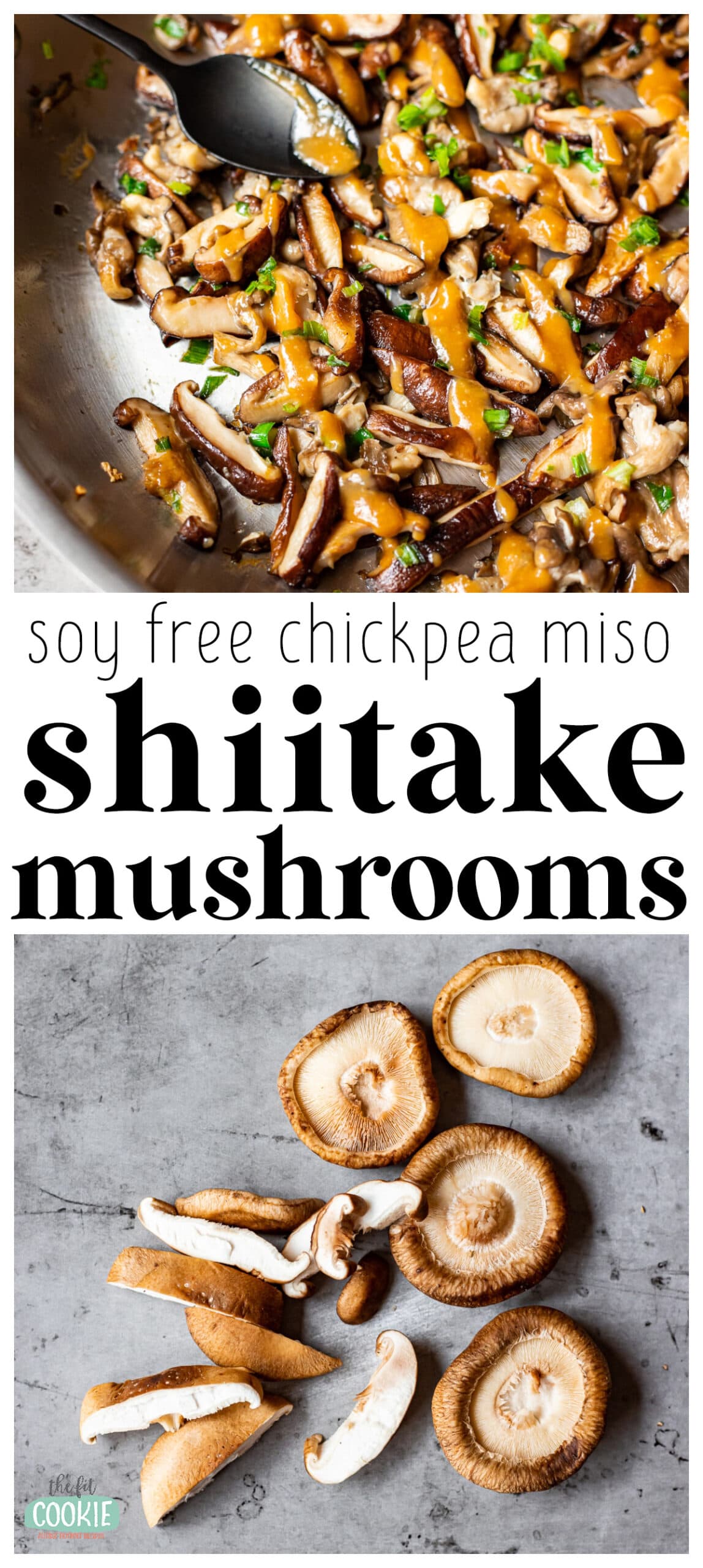
If you’re in love with the sweet, salty, and umami flavor of miso, you’ll love our recipe for oyster and shiitake mushrooms with miso sauce!
Our flavorful side dish doesn’t use regular miso, instead we used chickpea miso to keep this recipe soy free (the brand we used is also certified gluten free) but it’s still packed with incredible flavor. Your friends and family won’t know that this recipe is soy free!
This also happens to be vegan as well, and would be amazing in a grain bowl or “buddha bowl”. Or you can serve this alongside your favorite Asian-inspired dish, like our sesame shrimp and noodles.
Or you can eat this by itself, it’s pretty amazing that way (that’s how we ate this). Even my son who isn’t a fan of mushrooms really enjoyed this dish. The miso sauce adds a sweet and salty umami taste that complements the earthy flavor of the shiitake and oyster mushrooms.
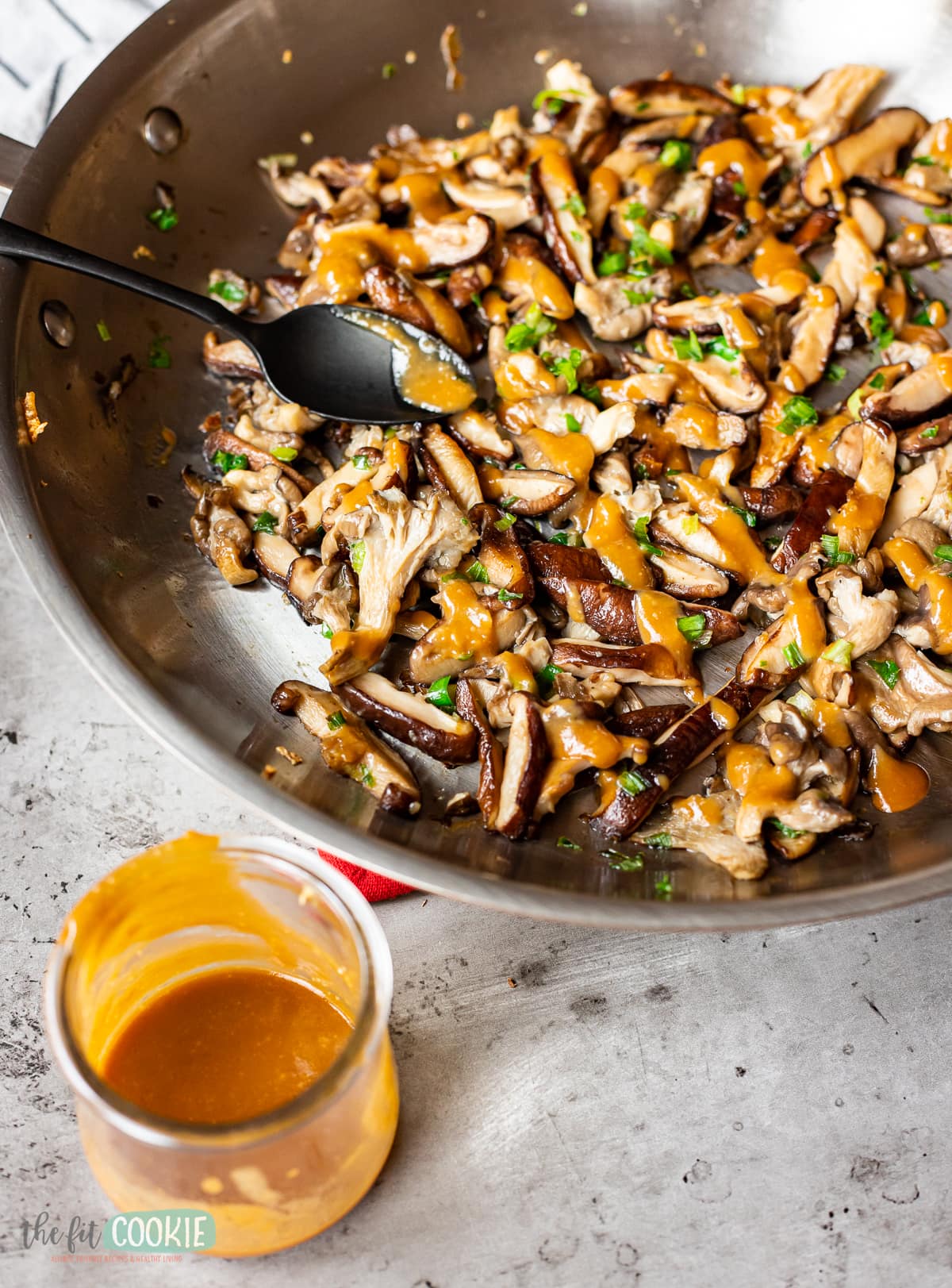
Our miso mushroom recipe is:
- Dairy free
- Soy free
- Gluten free
- Peanut free
- Vegan
How to make soy free miso oyster and shiitake mushrooms
This easy side dish comes together quickly and it tastes amazing and is allergy friendly!
Here are the steps to make chickpea miso mushrooms (this is just an overview, the full recipe is at the end of the post):
- Clean your mushrooms (it’s ok to do a light rinse in cold water, just don’t soak them).
- Remove the stems from the shiitake mushrooms and slice them. Tear the oyster mushrooms into bite sized pieces.
- Heat a skillet and add some light tasting oil to the pan. I don’t recommend using toasted sesame oil here, it tends to taste burnt when used to saute things and works best as a flavoring (we added some to the miso sauce for flavor). Un-toasted sesame oil might work here, I used light tasting olive oil (canola will work too).
- Add garlic to the hot oil and cook for a few seconds until fragrant, then add the shiitake mushrooms and saute for about 2 minutes.
- Add the oyster mushrooms and saute for another 2 minutes.
- Add the sliced green onions and saute again for 1-2 minutes until the mushrooms are softened to your liking.
- Remove the mushrooms from the heat and make your miso sauce. Whisk together the chickpea miso, coconut aminos (opt for a sweeter brand vs a saltier one), toasted sesame oil, and water. Whisk until it makes a smooth sauce.
- Drizzle the miso sauce over the mushrooms or toss the mushrooms in the miso sauce.
- Garnish with additional green onions and serve immediately.
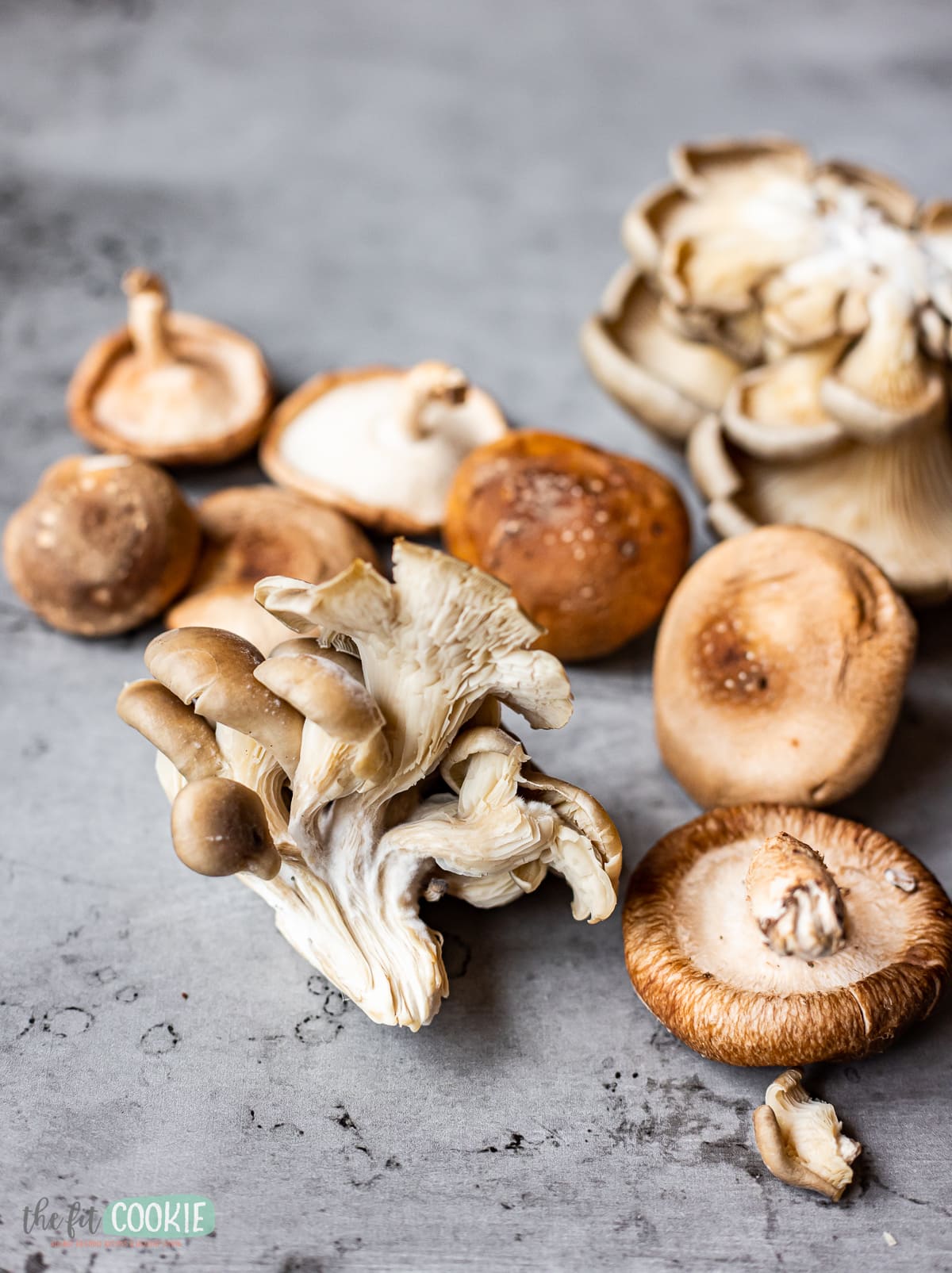
With this recipe, don’t add salt to the mushrooms while they are sauteeing because the miso has plenty of salt to it and this recipe will easily become too salty if you add additional salt. This is also why I recommend using a sweeter coconut amino brand (like Coconut Secret) to balance the saltiness of the miso.
I drizzled the miso sauce over the mushrooms for the photos, but tossed it all together when we ate this dish. It is so yummy! You can start by tossing in half the miso sauce to check the flavor and saltiness, then add the rest to your liking. We ate the dish with all of the miso sauce mixed into the mushrooms.
Since the miso sauce itself is not cooked with the dish, the probiotic cultures are preserved in the miso.
Chickpea miso
If you love miso for cooking but can’t have soy, there are a few brands of miso made with other kinds of legumes instead of soybeans. It took me a little while to discover that soy free miso was actually a thing, I didn’t realize until this year that chickpea miso was even on the market.
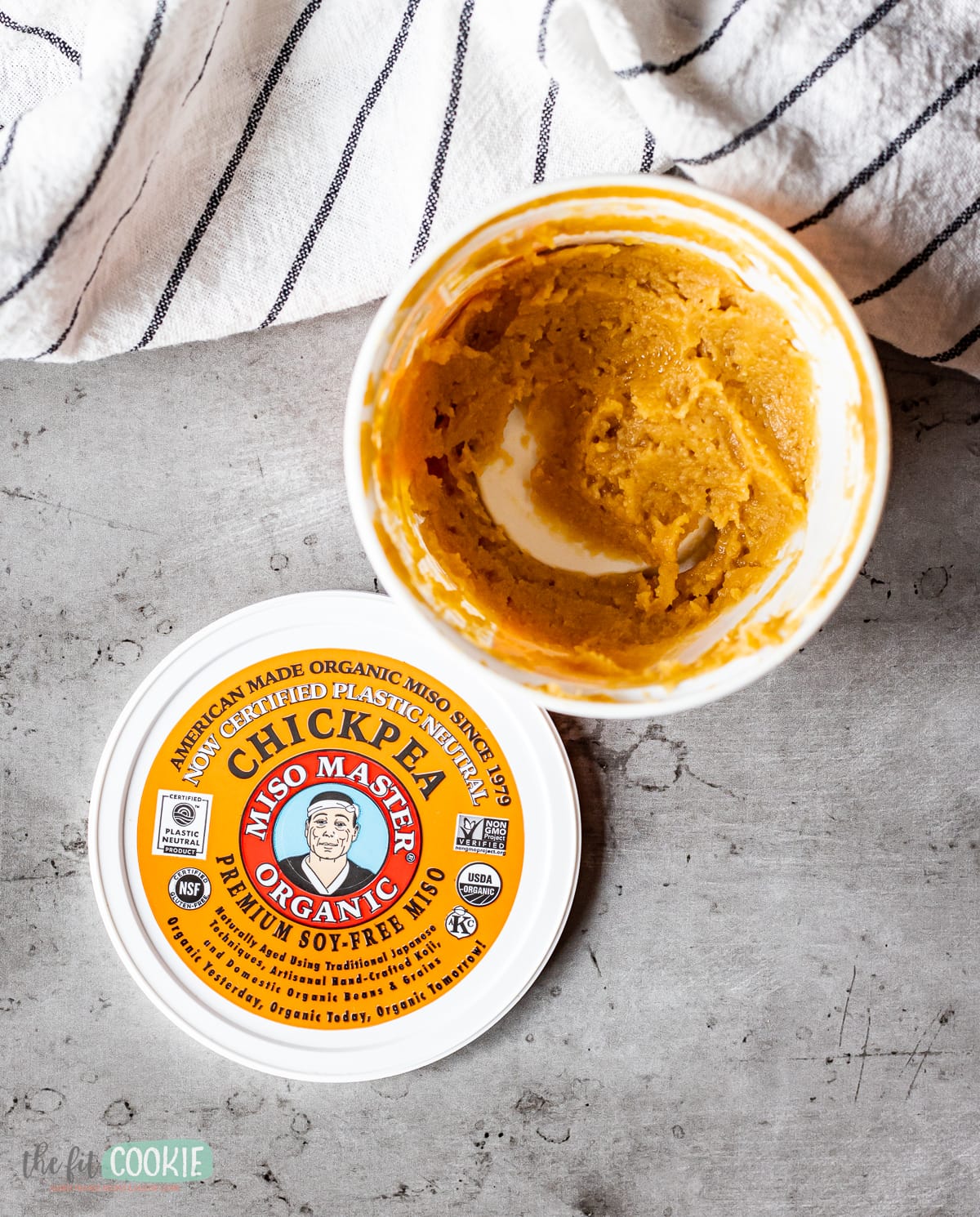
I was so excited to find soy free miso! I can’t have too much legumes, but if I add the chickpea miso to a recipe, it usually isn’t too much for me and I don’t have it all the time. I’d like to try the Yamazaki rice miso that is made without legumes, so far the only one I have found that is made without barley, wheat, or legumes.
So far, I’ve been using the Miso Master chickpea miso and it’s delicious. This particular brand is aged between 30-60 days, it’s mild and sweet, so it’s a good alternative to white (shiro) miso. It also lasts for up to 18 months in the fridge so it keeps really well.
Here are a few options for soy free miso:
- Miso Master organic chickpea miso (the one we used in this recipe, it’s delicious and pretty smooth vs other brands that are chunky)
- Miso Good soy free rice miso soup base
- South River Chickpea Miso
- South River Azuki bean miso
- Yamazaki soy free rice miso (made with rice and no legumes)
- Aedan chickpea miso
Fresh vs dried shiitake mushrooms
Since drying shiitake mushrooms can deepen their umami flavor and make them pretty potent, I prefer fresh shiitake mushrooms overall and for this particular recipe.
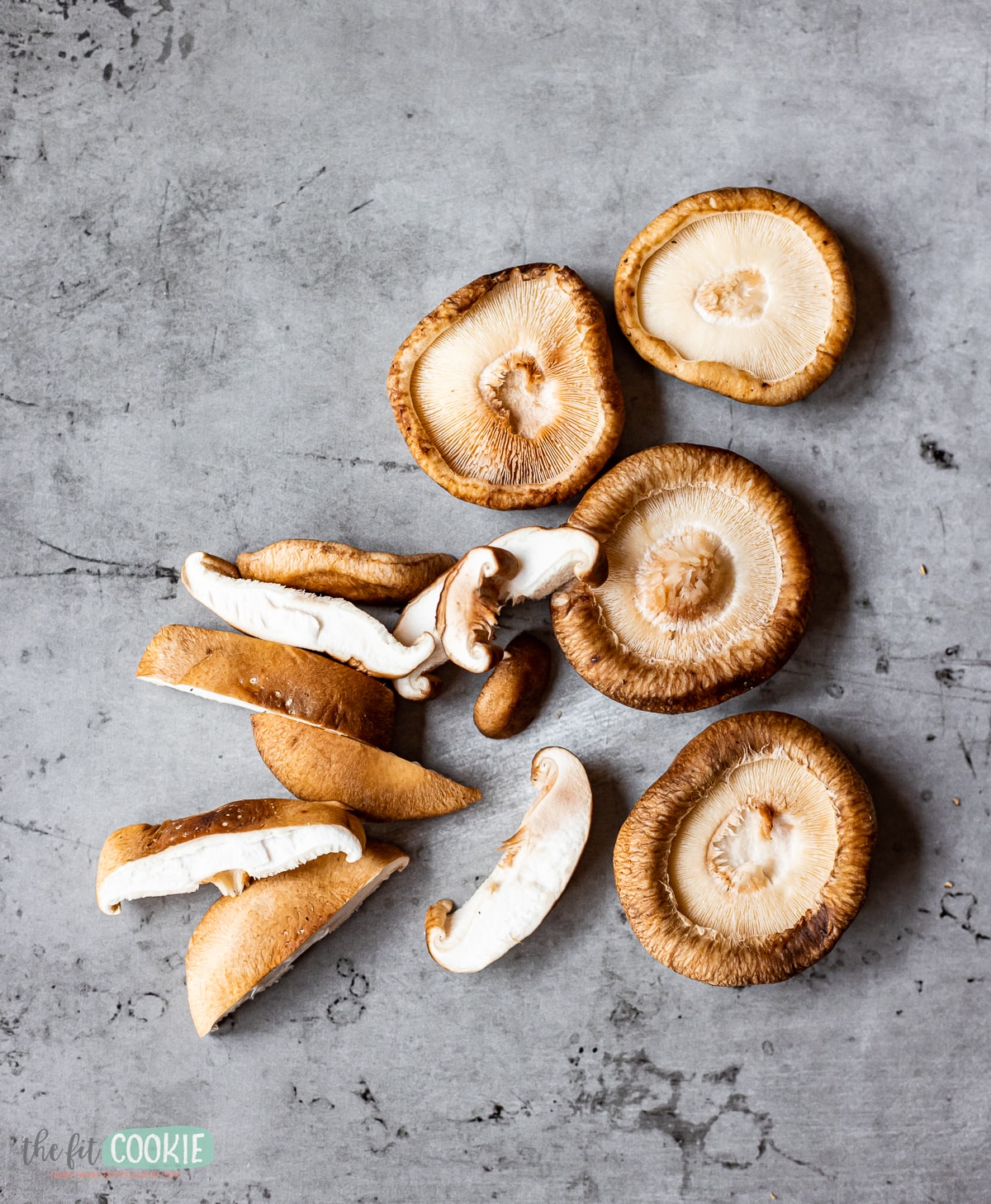
I’d recommend using fresh shiitake mushrooms in this recipe vs dried and rehydrated shiitakes, but that is my personal preference and if you really like the intense shiitake flavor of dried mushrooms, you can use those. Just follow the package directions for rehydrating before cooking them.
I personally don’t like dried shiitake mushrooms, and I think it depends on the brand as well. I’ve tried 2 different brands of dried shiitakes and the first one I tried was extremely pungent and off-putting. My entire family disliked them, they smelled and tasted incredibly strong. The second brand of dried shiitake I tried was much better tasting, but still a little too strong for me.
I’ve found that the taste of fresh shiitake mushrooms suit me better than dried ones, but it’s a personal preference. I think fresh shiitake would work the best in this recipe. I haven’t cooked with dried shiitake much, so I don’t know how dried ones would taste or cook up in this recipe.
You can serve these chickpea miso mushrooms with some of our other soy free recipes:
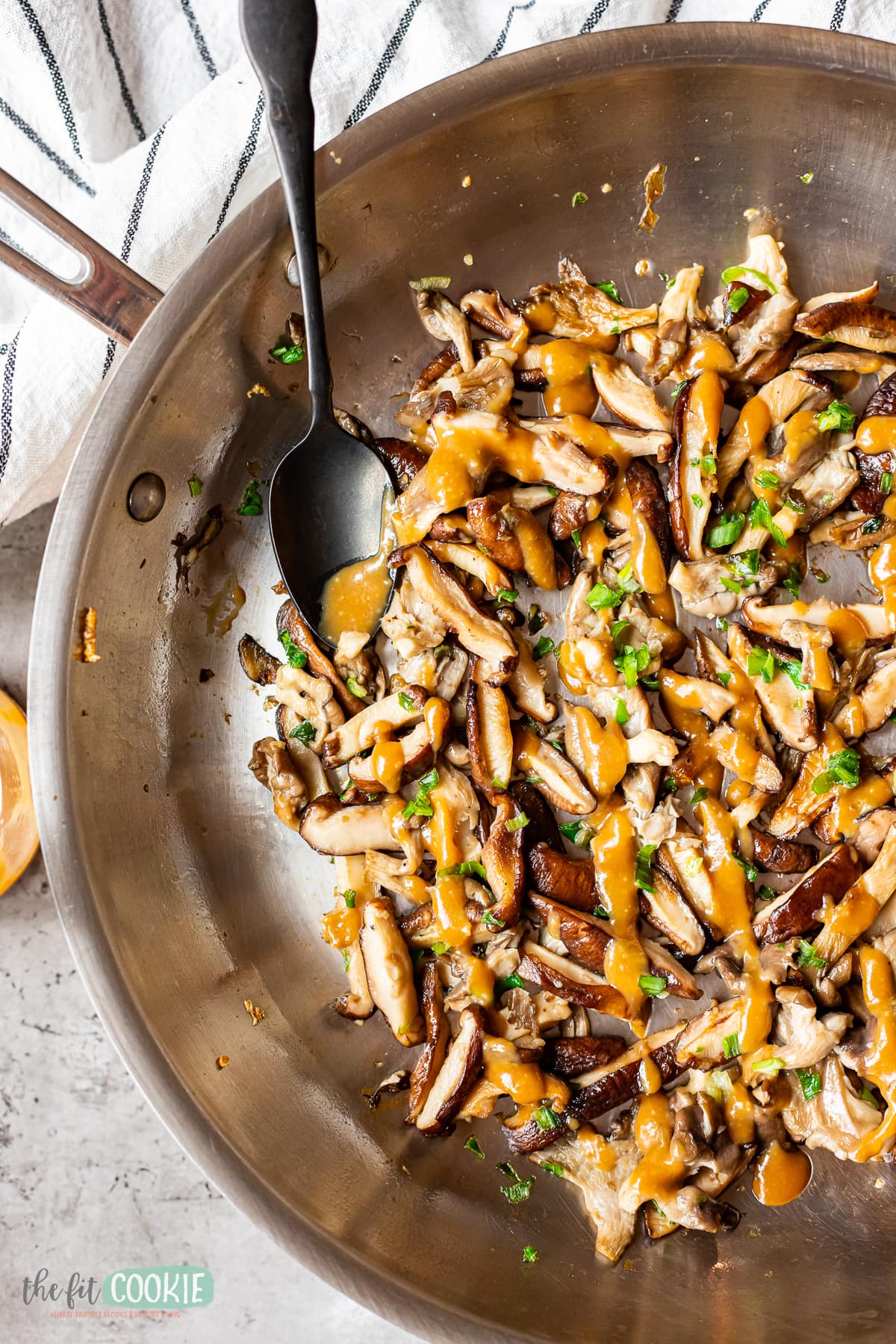
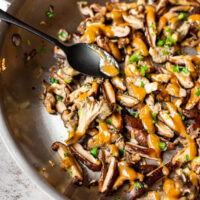
Chickpea Miso Oyster and Shiitake Mushrooms (Soy Free)
Ingredients
- Light tasting olive oil
- 6 ounces fresh shiitake mushrooms
- 6 ounces fresh oyster mushrooms
- 1 clove garlic
- 2 Tablespoons sliced green onions + more for garnish
Miso sauce
- 1 Tablespoon Miso Master chickpea Miso
- 1 teaspoon coconut aminos (try to use a sweet variety, like Coconut Secret, vs a salty one)
- 1 teaspoon water
- ½ teaspoon toasted sesame oil
Instructions
- Preheat a skillet over medium heat and add 2 Tablespoons of oil.
- Clean and trim your mushrooms, removing the stems from the shiitake mushrooms. Slice the shiitake mushrooms.
- Use a garlic press and press the garlic clove into the pan with the hot oil and sauté the garlic briefly, then add the shiitake mushrooms and sauté for about 2 minutes.
- Add the oyster mushrooms and sauté together for 2 minutes. Add the green onions and sauté another 1-2 minutes.
- Turn off the heat and in a small cup, whisk together the miso, coconut aminos, water, and sesame oil to make a miso sauce.
- Serve the miso sauce on the mushrooms by either drizzling the sauce over the mushrooms or toss the sauce with the mushrooms and serve immediately with additional green onion on top for garnish.
Nutrition

Sarah Jane Parker is the founder, recipe creator, and photographer behind The Fit Cookie. She’s a food allergy mom and healthy living blogger based in Wyoming. Sarah is also an ACSM Certified Personal Trainer, ACE Certified Health Coach, Revolution Running certified running coach, and an ACE Certified Fitness Nutrition Specialist
